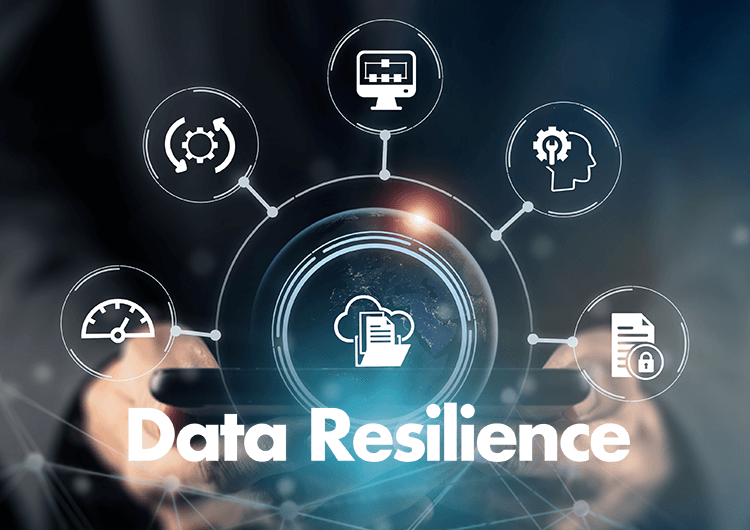The convergence of blockchain technology and Business Continuity Management (BCM) is transforming how organizations safeguard critical operations and ensure data integrity. Blockchain’s transparency, immutability, and decentralization provide unprecedented opportunities to strengthen resilience against disruptions. This article explores how blockchain and BCM work together to revolutionize transparency and data resilience.
What is Blockchain Technology?
Blockchain is a decentralized digital ledger that records transactions across a network of computers. Its key features include:
- Decentralization: Data is distributed, not stored in a single location.
- Immutability: Once recorded, data cannot be altered.
- Transparency: All participants in the network have access to the same version of the data.
These principles make blockchain ideal for ensuring secure, verifiable, and tamper-proof records.
Understanding Business Continuity Management (BCM)
BCM refers to the strategies and processes that organizations implement to ensure critical functions remain operational during and after disruptions. Key goals of BCM include:
- Minimizing downtime.
- Protecting critical data and operations.
- Ensuring a swift return to normalcy after incidents.
The Intersection of Blockchain and BCM
1. Improving Transparency
Blockchain technology operates on a decentralized and distributed ledger, meaning all participants in the network have access to the same, immutable record of transactions. This eliminates the need for intermediaries and ensures that all stakeholders, from suppliers to customers, have a shared view of the truth, fostering trust and collaboration. In the context of BCM, this transparency can be crucial for quickly identifying and responding to disruptions, as all relevant information is readily available and verifiable.
2. Ensuring Data Integrity
One of the core tenets of blockchain is its immutability. Once data is recorded on the blockchain, it cannot be altered or deleted without the consensus of the network. This provides a high level of data integrity, protecting critical business information from tampering, fraud, and cyberattacks. In a crisis situation, maintaining the integrity of data is paramount for accurate decision-making, financial reporting, and legal compliance.
3. Facilitating Collaboration
Blockchain's decentralized nature fosters seamless collaboration among different stakeholders. By enabling secure and transparent information sharing, blockchain facilitates faster communication and coordination during a crisis. For example, in a supply chain disruption, blockchain can enable real-time information sharing among suppliers, manufacturers, and logistics providers, allowing them to quickly identify bottlenecks, reroute shipments, and minimize the impact of the disruption.
Benefits of Blockchain in BCM Systems
1. Real-Time Data Tracking
Blockchain provides a transparent record of events, enabling organizations to monitor and respond to changes as they occur.
2. Enhanced Security and Data Protection
Cryptographic protocols ensure data remains secure from cyberattacks or unauthorized access.
3. Simplified Compliance and Audit Processes
Blockchain’s transparent and immutable nature makes it easier to demonstrate regulatory compliance and conduct audits.
Blockchain Use Cases in BCM
1. Disaster Recovery Planning
Blockchain enables secure, decentralized backups, ensuring critical data remains accessible even if primary systems fail.
2. Supply Chain Resilience
Real-time tracking and verification of supply chain activities ensure continuity during disruptions.
3. Securing Critical Business Operations
Blockchain records can maintain operational integrity by preventing tampering and ensuring accurate logging of activities.
How to Implement Blockchain in BCM
1. Assess Organizational Needs:
Identify the areas where blockchain can provide the most value.
2. Choose the Right Blockchain Platform:
Evaluate platforms like Ethereum, Hyperledger, or Solana based on scalability, security, and cost.
3. Establish Governance and Policies:
Define clear rules for how blockchain will be used and managed within the BCM framework.
Real-World Examples of Blockchain in BCM
1. Healthcare:
Blockchain secures patient records, ensuring continuity of care during cyberattacks or system failures.
2. Finance:
Banks use blockchain to safeguard transaction records and maintain uninterrupted services during outages.
3. Logistics:
Supply chain disruptions are mitigated through blockchain’s transparent tracking and verification systems.
The Future of Blockchain in BCM
1. Predictive Analytics with Blockchain
By combining blockchain with IoT and big data, organizations can predict potential disruptions and prepare proactively.
2. AI Integration for Proactive Risk Management
AI algorithms can analyze blockchain data to identify vulnerabilities and suggest preventive measures.

